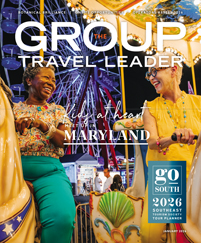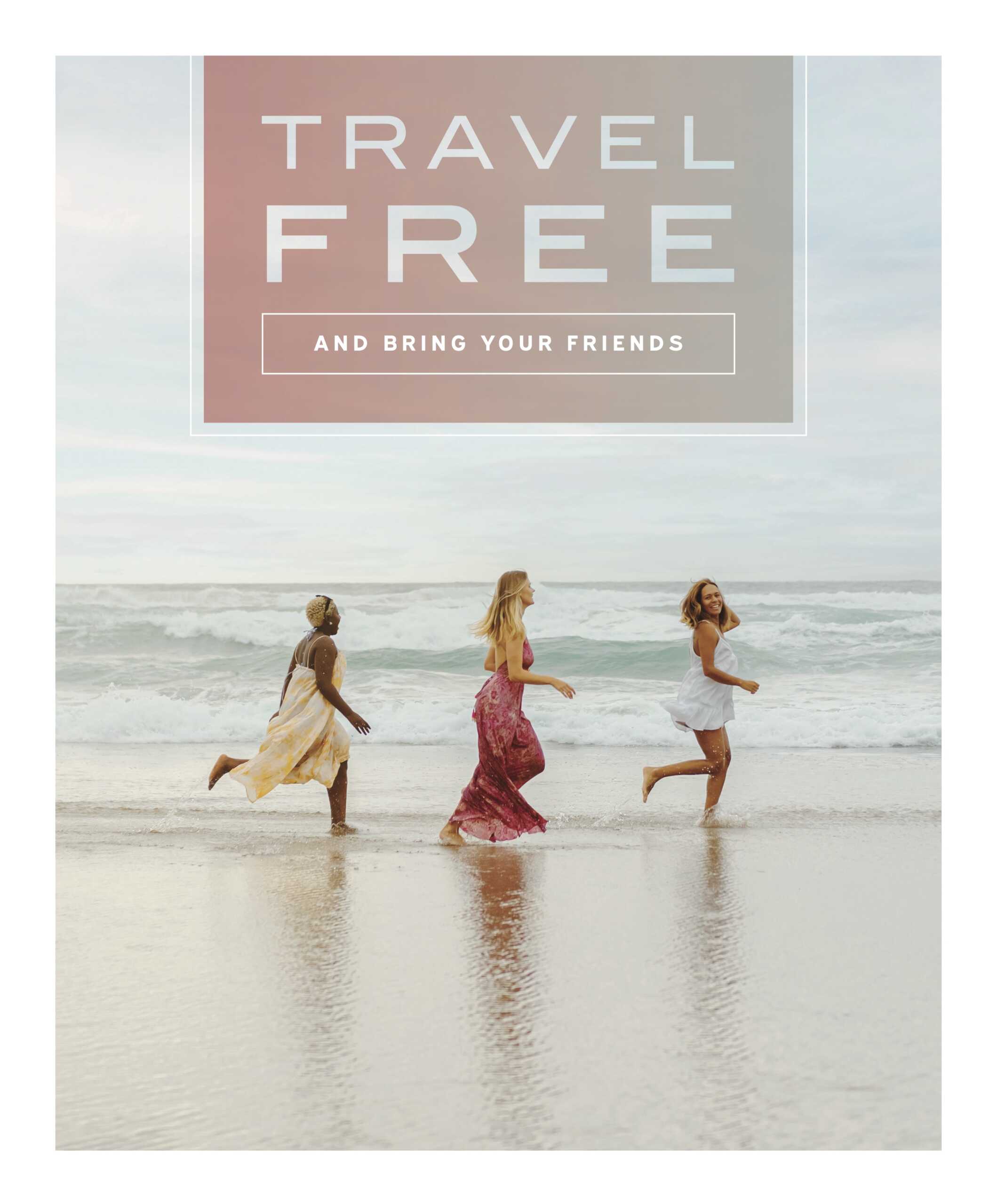After years of record-setting tourism growth in the post-pandemic era, a challenging trade policy environment has injected uncertainty — and, in some cases, significant declines — into the travel industry. The Group Travel Leader spoke with the leaders of four tourism associations to get their perspectives on these challenges, as well as opportunities that may be growing in spite of them.
Carylann Assante, CEO, Student and Youth Travel Association (SYTA)
Terry Dale, President and CEO, United States Tour Operators Association (USTOA)
Fred Ferguson, President and CEO, American Bus Association (ABA)
Catherine Prather, President, NTA
Why does tourism investment have so many detractors in government? Farming, alternative fuels and industrial development have all earned favorable treatment as vital components of our economy. Why is tourism disregarded for its economic contributions?
Prather: It’s so confounding. Tourism contributes tremendously, both economically and diplomatically. This would be a great question to pose to legislators: Why is tourism disregarded for its economic contributions? Once they reflect on the numbers alone, how could they not place greater value on our contributions and ensure that policy decisions and political rhetoric don’t have devastating effects on our essential tourism economy?
Looking at a table of U.S. employment by industry, we can see that leisure and hospitality surpasses employment in both retail trade and manufacturing. It doubles financial and construction activity. It’s greater than agriculture, mining and utilities.
The devastating cut in funding for Brand USA is a huge alarm for those of us in the industry. And federal funding cuts are pushing spending decisions to the state level, and states are already looking at redirecting tourism funding to other needs.
Dale: Why don’t we get recognized as a significant contributor to our nation’s economy? It’s not for a lack of education and awareness. Between USTOA and Brand USA, we’re [on Capitol Hill] all the time. We’re present. We’re engaged. During COVID, when it became dramatically apparent that hotels were empty and restaurants were less full, they recognized the loss of tourism and how valuable it is to local economies.
What I think we’re doing wrong is that we’re not writing big [campaign] checks. And, at the end of the day, whether it’s fossil fuel or agriculture, they write checks. I’m not going to say we don’t, but we don’t in the kind of way that carries the weight of other segments of our economy.
assante: My instinct is that tourism is very easy to see and impact, unlike other industries. Consumer goods, manufacturing — you just can’t shut down a plant, but you can shut down tourism very quickly by legislation or making decisions about visas or access. The very fact that travelers can choose not to travel — they can do without that. But they’re not going to not buy Apple phones or goods from China. We’re very visible, and it’s easy for the Canadians to make the decision not to travel. You can see it really quickly and really feel the impact.
Ferguson: In the tourism community, we’re very fragmented. You have the bus association, the tour focus, the inbound focus, U.S. Travel. But what we have learned is that we have to do more to put the coalition to work to have a unified message. We have to expand our reach. When I was a congressional staffer and even when I was a lobbyist, Brand USA wasn’t at the top of my mind. I didn’t understand until I joined ABA what it is and why it matters. A lot of people on the Hill still don’t understand Brand USA, so we have more educating to do. When we can expand our coalition, we can win.
Inbound tourism to the U.S. has fallen significantly this year. Is this having any knock-on effects on the domestic traveler? Does it create any opportunities?
Dale: I think it does create opportunities for the domestic traveler. We always tout that the international traveler spends more per day and stays longer. But with the dramatic drop this year, my assumption would be there are some good packages for domestic travelers to take advantage of.
We do a lot of work with the national parks. They cut 1,100 positions then they scramble and try and rehire the 1,100 positions, and then they cut billions of dollars. Even the national park experience, I’m not sure what that’s going to be for our domestic travelers because everything has been turned upside down.
Assante: From a domestic perspective, we have remained steady or even grown with in-country travel. And in-country travel in Canada has grown because Canadian students are staying in Canada and traveling around Canada. For North American students traveling outbound, we’re hearing that Europe is a popular destination. So, they’re traveling to Europe, but not traveling to the Middle East, Asia or India. They are sensitive to what’s happening around the world.
What is concerning right now is the high cost of transportation. The weakening American dollar is making it more expensive to travel abroad.
Ferguson: We operate the largest domestic travel show in North America. Our Marketplace 2026 is shaping up to be spectacular. We’re going to Reno, Nevada, which is the first time in 20 years we’ve been west of the Mississippi River. What that tells you is that businesses aren’t going to sit on their hands. If they’re losing inbound travelers, they’re going to go find it somewhere else. Domestic travel is a trend they’re pursuing. Our industry has to be able to answer the call. Right now, they’re doing that.
Prather: Are we seeing an increase in domestic travel? There are indications that Americans are shaking off earlier concerns about the economy, but not to the levels we had hoped would happen. In May, we saw that U.S. outbound travel increased 4.5% over last year, but that doesn’t necessarily point to an increase for domestic tourism. More than anything, this heightens the need for the United States to be more receptive to Canadian travelers to help keep our tourism economy strong. The economic uncertainty and chaos are causing people to tighten up a bit. We’re hearing about trips being shorter and closer to home.
We’re several years into the AI revolution. How are your organization and your members using it? What’s possible?
Assante: I just finished an association survey on AI. We’re running a number of sessions on how to use AI for RFPs. It gathers information from destination websites and puts it into a format for an itinerary that saves time for a group travel planner that is working with a school and developing a number of itineraries. I have heard also that many of our supplier members are developing AI content. They’re drawing from their own content as opposed to using outside tools like ChatGPT. They want their team’s AI to pull from the approved, correct content.
Ferguson: We’re trying to use our platform to teach our membership. We’ve had speakers at our in-person events. We’ve done webinars. We’re going to continue to do that. From ABA operations, we’re embracing the use of AI tech and tools. We’re a very small team, so when we’re able to automate tasks or use tools to save time, that gives us more availability to answer member questions. So, we’re pushing our dollars further. This is about maximizing our staff, not cutting staff.
Prather: At an association level, we have a chatbot that was developed by our corporate partner Satisfi Labs. It was trained on our own language to ensure it was going to be good content. It has saved some staff time. NTA tour operators are using AI to build or enhance itineraries, particularly when visiting new destinations. But it’s important to note that if they use it for these purposes, they will still verify the information, which is critical. Operators also say they’re turning to AI to jazz up existing content, spruce up schedules and generate copy for catalogs and newsletters.
Dale: I believe that consumers, travel advisors and even my tour operators can start with AI in building an itinerary — just the basics. It’s still our belief that it requires the human touch to find those unique moments. But it can give you a basis to start from, which saves a lot of research, time and energy. I saw an AI expert a couple weeks ago saying you should encourage your team to spend five minutes a day just playing with AI — getting comfortable with it and exploring how you might use it at work and at home to make your life easier.
There seems to be a new spirit of cooperation among tourism organizations in recent months. What are the biggest opportunities for our industry to make progress through collaboration and cooperation?
Ferguson: It started for me at Marketplace. I took the stage for the very first time the same day that the Canadian tariffs were announced. At that moment, I brought the head of the Motorcoach Canada Association and the head of the United Motorcoach Association up on stage with me to say, “These tariffs are going to be no joke. Two-thirds of motorcoach capacity is based in Canada. This is going to be bad.” Since that meeting, we have done a weekly conference call with those associations and our manufacturers to make sure we’re all rowing in the same direction when it comes to tariffs. So far, motorcoaches have been kept off the Canadian tariff list, so that has been successful.
Prather: We know within our own association that when travel professionals work together, share info and troubleshoot challenges, everyone benefits. It’s the same when tourism organizations work together. Nowhere has cooperation proven more effective than in our advocacy work. The Beyond Borders Tourism Coalition has about 15 U.S. and Canadian tourism organizations working together to be that unified voice for common sense policy. Is this coalition a short-term or long-term thing? We feel it’s a long-term thing because there are always going to be challenges. We’re trying to raise the awareness of the vast importance of travel and tourism.
Dale: This is a critical time for all of us. The more we can collaborate, the stronger we’ll be. We’re not going to change the current administration, no matter what we do. But it comes down to awareness; this is about jobs. When you have Canada, your number one market, suffer that kind of loss, at the end of the day it means jobs. I hope this collaboration is one of the lessons from this experience. Let’s say six years down the road, Canadians are willing to come back. I don’t think initiatives like Beyond Borders should cease because there’s always going to be something we need to pay attention to somewhere in the world.
Assante: I’m working with a new coalition of associations across all sectors of the travel industry looking at cross-border travel. We have another coalition around the national parks. How can we use our voice to impact what’s happening? I definitely see it, and it’s exciting. I also think you have a lot of association leaders who are interested and involved in connecting with each other. There are some new leaders and a lot more conversation about how we can better work together.












